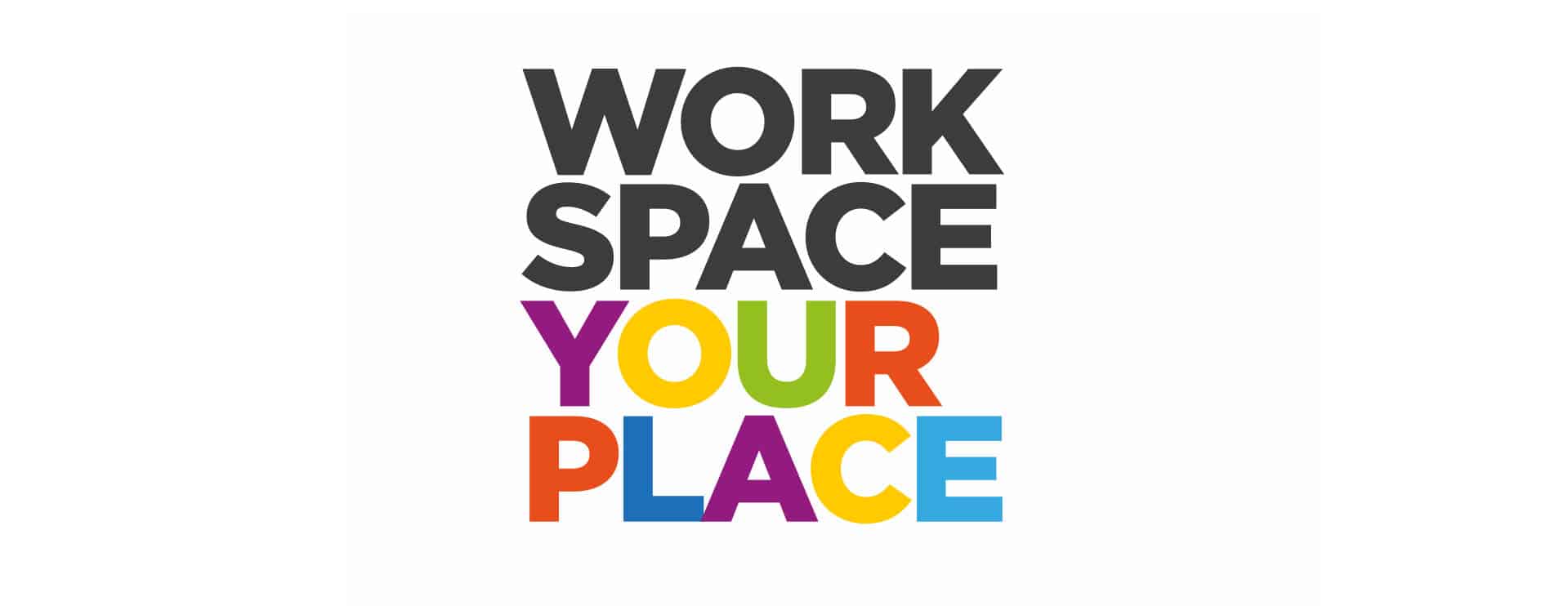IGEL Blog
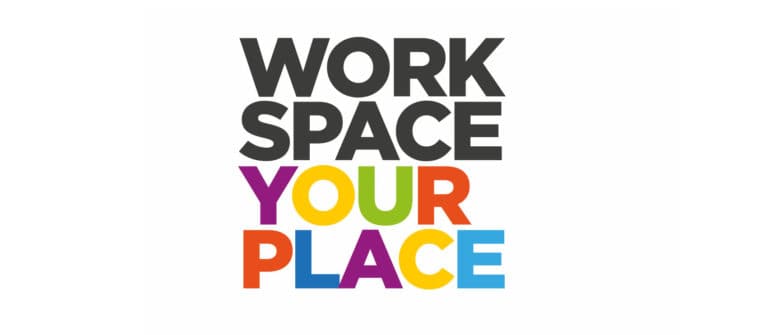
How to Process Paper
Tackling Your To Dos & Tasks with an Action Center
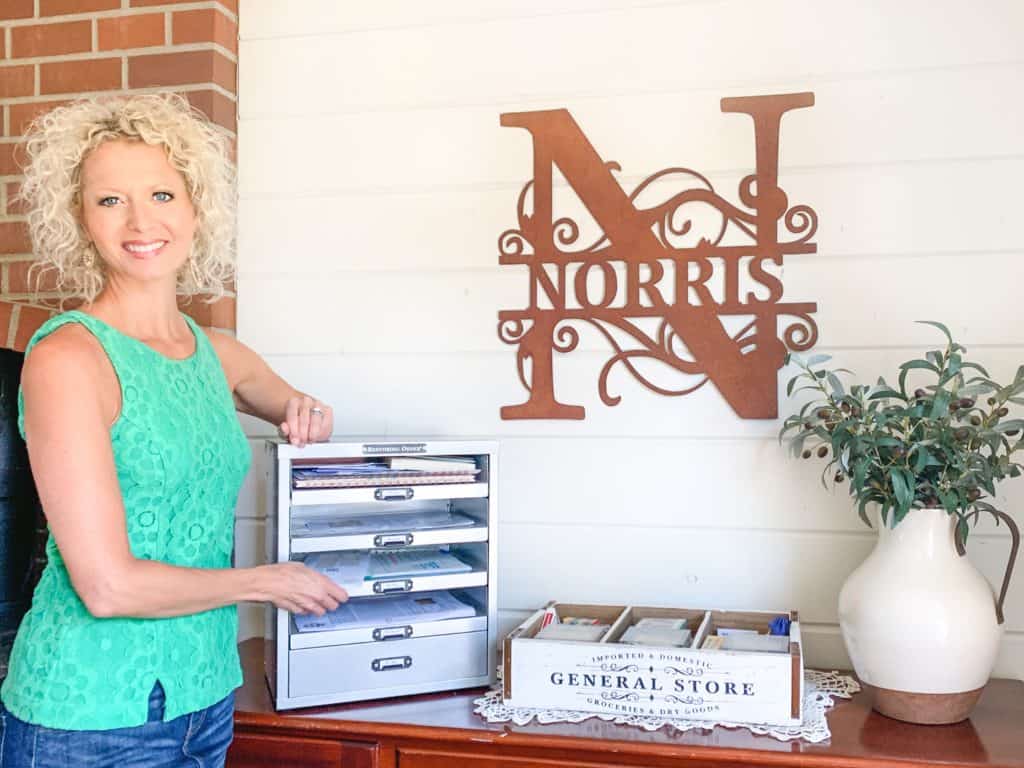
Do you have paper and “to dos” piling up around you? Is your hot paperwork buried under layers of archaeology? Paper is the number one issue for most workplaces and households; it is an ongoing challenge fueled by the sheer incoming volume. Read on to learn how to process paper by setting up an ACTION CENTER.
If you’ve followed Restoring Order for any length of time, you know that I teach a LOT about paper. Why? Because our paper is the “breadcrumb trail” of our lives and it tells the story of our financial, household, medical, and personal lives. It is a mirror of what we have done and are doing. It’s a record of our lives.
To complicate matters – there are many different types of paper and a unique system needed for each type.
In this blog, I am helping you deal with the hot, current paper that requires action.
(If you need help with other kinds of paper, be sure to see my Paper Organizing playlist on my YouTube channel!)
Actionable paper is different from other kinds of paper due to its immediacy. We can’t ignore it or bury it without negative consequences. It’s vying for our attention and pestering us with its outstanding demands. We need to take some kind of action on it…soon!
We need a simple, visual system to capture this hot paperwork and move each piece into action through resolution.
The first step is to capture this incoming paper.
Capture Incoming Paper
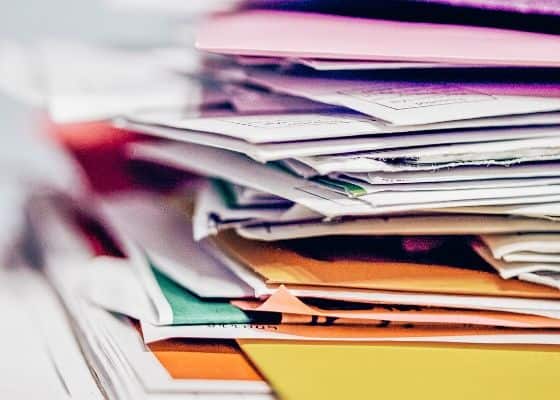
When paper comes into your workspace, it needs a designated place to land.
In my experience as a professional organizer, paper tends to land all over the workplace and home. It lands on the kitchen counter, the stairway, the dresser, and every work surface possible. It stacks up and gets layered with other documents and items of varying importance.
To undo the habit of paper landing helter-skelter, you’ve got to collect it intentionally, especially the HOT paper requiring your immediate attention.
A good processing system captures incoming paper and queues it for action.
Think of your incoming paper processing system as your “runway”. Just like an airport runway, paper should land and take back off in your action system; it shouldn’t land and park. Your action center should move paper along in an organized and clear fashion.
In order to correctly capture the hottest paper for action, you first need to learn to differentiate hot, actionable paper from other kinds of paper.
Identify Actionable Paper
OK, now that we know we are going to capture paper with our processing system, the question is what kind of paper?
For your action center, we are looking for paper that is active, immediate or hot. These are your pressing tasks and to dos. They are usually pretty quick turn-over items. In other words, you can do it and forget it.
Action paper is different from:
- Projects, which are comprised of multiple pieces of paper or multiple steps. Examples of projects include work initiatives, trips, home improvement projects, etc.
- Projects are short-term whereas hot, incoming actionable paper is immediate-term. Projects will hang around for a little while, but action paper will be done and then disappear. Projects require that you visit the folder again and again, and typically multiple reference items are included in that packet/file folder.
- Permanent Reference, which is completed paperwork that needs to be filed. Examples of permanent files include: employee files, investments, checking account paperwork, equipment files, etc. Permanent reference files are kept at least annually, if not in perpetuity, whereas hot, actionable paper is only around for a short while.
Hopefully, you can see that your pressing paperwork has a more immediate currency than projects or permanent files.
It’s this hot paperwork that you will identify, capture, and queue for ACTION.
Choosing an Action Center Format
Now that you know what kind of paper you’re keeping an eye out for, you’ll need to store it temporarily until you can get to it.
There’s a few common styles of keeping this type of paper:
- Spread it all around your surfaces (and we know that doesn’t work!)
- Pile it up in your workstation (which requires constant digging and sorting)
- Organize it in some type of desktop accessory (you can tell where this is headed, right?)
When it comes to using paper sorters, I’ve seen a lot of people using files for their action items, typically stored in an incline sorter like the one pictured here.
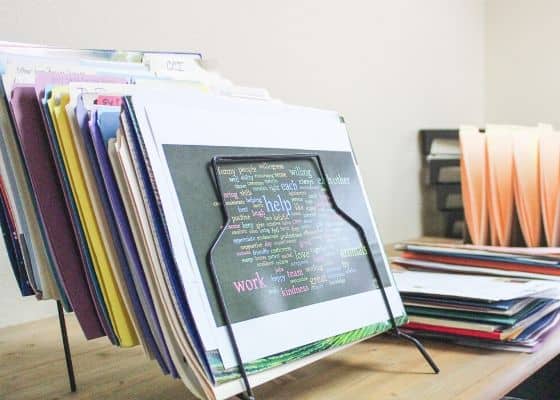
However, there are 2 problems with storing hot, actionable paper in file folders:
- It muddies the water between that which is a project and that which is current, hot action items. In other words, if both very hot AND short-term paperwork is stored in the same type of system (ie: file folders), it can become unclear which you should do FIRST.
- Storing fairly urgent items inside file folders is counter-productive to action. Actionable paper hidden inside file folders silently moves OUT of our radar and INTO a visual and mental holding pattern. Simply put: if we can’t see it, we forget we have to do it!
I prefer using trays for an action center, like the system pictured here.
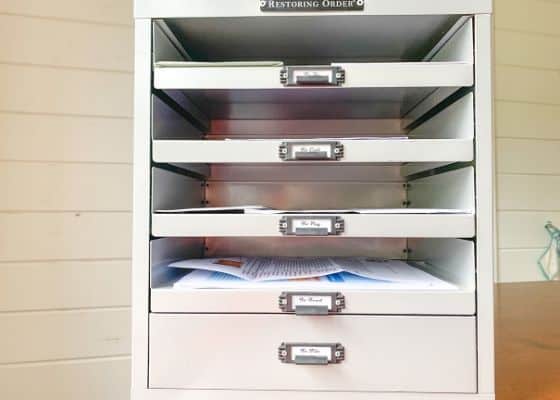
Storing your actionable paper in open trays allows you to see everything that needs to be done. For instance, if your tray of payables is full, you will know you have to pay some bills!
In my experience as an Order Restorer, it seems like 5 is about the right number of trays. Most of us need some delineation between types of hot paperwork, but we don’t need endless trays, or we simply won’t remember them all!
Just use as few trays as your paper dictates…I’ll explain below….
Sort Paper by Action Needed
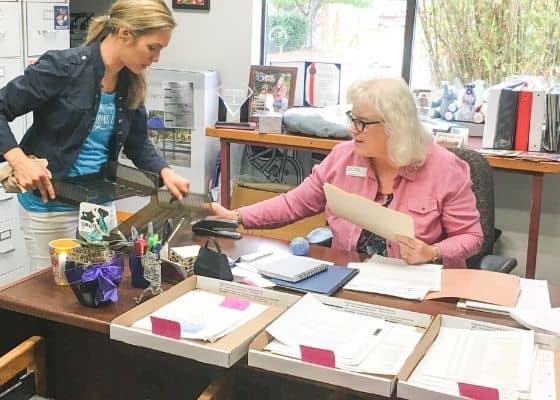
Now it’s time to sort through all paper on your desktop and sort it into type of action needed. These will inform your tray labels. You can see in this picture that one of our professional organizers is using banker’s box lids for this process.
We like to sort hot paper into box lids because it contains each type of action-needed together.
Our organizing consultants use sticky notes turned-upside-down to label each lid as we progress through this sorting process.
As soon as we identify a paper that needs to be done, we put it in a box lid and make a sticky note labeled “To Do.”
The next paper we might find might need to be read, so we will put it in a new lid, and make a stick note labeled “To Read.”
As we go through this organic sorting process, the sticky notes will denote what-kind-of-action is needed for each type of paper.
If we find related items, we will use clips and staples or clear plastic page sleeves to join those items together so they don’t get separated.
If we need to remember something about an action item, we will write a note-to-self on a different colored sticky note and stick it on the page. While you’re taking the time to sort your hot paperwork and revisiting all these to-dos is a great time to make notes-to-self.
TIP: I will sometimes also jot down how long that item will take to complete (5 minutes, 30 minutes, an hour, etc). This is a great reference point when you actually set aside time to complete your tasks. Then, when you pull out your To Do tray, you will quickly be able to tell how long each task will take and can be most efficient with your time!
After all your action paper has been sorted into box lids, you’re ready to transfer it to your final tray system.
Label with Verbs
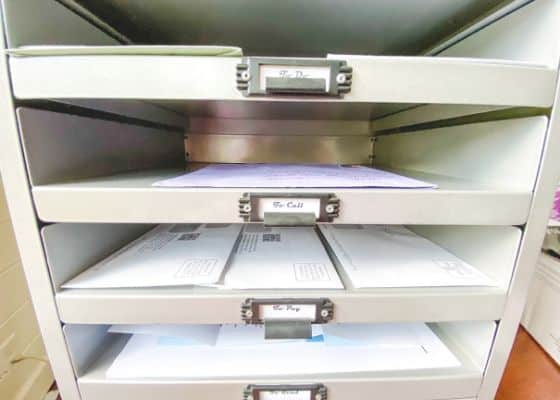
One of the final steps to ensuring your TO DO paper gets DONE is to label your trays with action-oriented directives!
Since this is actionable paper, I like to label with imperative verbs, like the following common trays:
- To do
- To call
- To pay
- To read
- To file
Each one of these imperative verbs is self-explanatory and helps the system user immediately discern what action to take.
Some less common, but very useful action types include:
- To enter – this tray can house all the data entry bits, like business cards, phone numbers jotted onto a sticky note, and information written on envelopes. This tray will give you a way to queue floating data into electronic form.
- To decide or discuss – this tray is a place to temporarily store items for discussion, most often with your spouse or assistant. If this kind of hot paper lands on your surfaces but doesn’t get moved along, it’s a good indicator that you’d benefit from a To Discuss tray!
- To review – this tray offers a separate place to temporarily store & take action on hotter readables than magazines and catalogs, like your new healthcare plan (before you file it), and newsletters and documents you’ve promised to “look over.” To Review trays give you a place to put readable items that require your close attention and quick turn-over.
A few practical tips:
- If you find that you have a HUGE To Do pile, you might be overwhelmed and paralyzed with what to tackle first. In these cases, I help my organizing clients by creating a To Do A and a To Do B tray. This will allow you to take a quick critical look at all your tasks and at least identify the most urgent matters. Then, once you get through the A’s, you can move onto the B’s.
- While I like to use consistent imperative verb forms for labeling, it’s just a suggestion, not a dictate. Good paper management is all about what works for you! Don’t get caught up in imperatives, use what makes most sense to you. Instead of “To Do,” you might like the words “Hot” or “Immediate” better. Label your trays based on what YOU need to see in order to incentivize action!
Schedule Processing Time

The most overlooked, but most important part of processing paper is ridiculously simple: making the time to ACTUALLY TAKE ACTION ON THE PAPER after you’ve neatly sorted it!
Years ago, I helped a business owner set up her action center for processing hot paper, of which she had mountains. Months later, I came back to visit and everything in her trays was exactly as I had left it, collecting dust! I realized then that she had not correlated her physical tasks with her time management habits.
In order for your action center to work; you’ve got to take action. You’ve got to get your-dos done!
I recommend setting aside daily time on your calendar to process through your pressing, actionable paper in your action center. If you want until you have a “free moment,” you’ll likely miss deadlines and fail to follow through in a timely manner on those aging, hot items.
I hope this blog has de-mystified what to do with your hot paperwork and how to process it like a pro organizer! For more on successful paper management, check out the home office chapter in my book “Restoring Order to Your Home” and that paper organizing playlist on my YouTube channel!
Here’s to reclaiming your paper and your surfaces!
Your friend in organizing and life reclamation,
Vicki Norris

